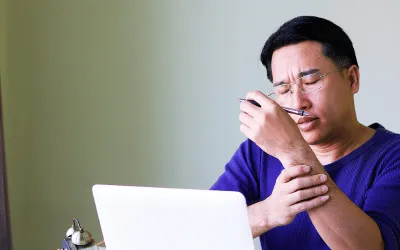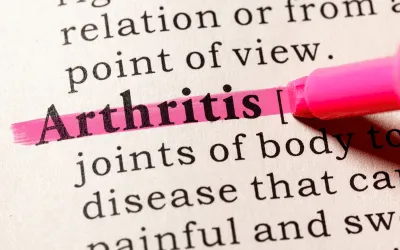About Arthritis
As the nation’s #1 cause of disability, arthritis affects nearly 60 million adults and 300,000 children. Over 100 types of arthritis and related conditions damage the joints and often other organs.
How can we assist you?
Helpful Tools for You

Bridging the Gender Gap in Axial Spondyloarthritis: Why Women Are Still Waiting Too Long for Diagnosis
Axial spondyloarthritis (axSpA) is a chronic, inflammatory condition that primarily affects the spine and sacroiliac joints, causing persistent pain, stiffness, and reduced mobility. However, not all patients are treated equally—especially when it comes to gender.
🚨 Recent research published in the International Journal of Rheumatic Diseases reveals a concerning trend: women with axSpA face a significantly longer delay in diagnosis—by an average of 2.4 years—compared to men. This delay contributes to greater disease burden, increased pain, and worsened mental health outcomes, despite women often being more proactive in managing their health.
🧬 What’s Behind the Delay?
Several factors contribute to this gender-based diagnostic gap:
Atypical symptom presentation: Women with axSpA frequently report more diffuse symptoms, such as neck, hip, and widespread back pain, which can be mistaken for mechanical or non-inflammatory conditions like fibromyalgia.
Lower HLA-B27 positivity: HLA-B27 is a common genetic marker used to support axSpA diagnosis, but women are less likely to test positive, making diagnosis more challenging using standard criteria.
Outdated biases: Historically, axSpA was believed to primarily affect men, leading to under-recognition of the disease in women. Despite growing awareness, many clinicians still overlook or misattribute women's symptoms.
Higher reported fatigue and functional limitation: Women tend to experience greater physical impairment and energy depletion, further impacting daily life and mental health.
🧠 The Mental Health Toll
The study also highlights that women with axSpA experience higher rates of anxiety, depression, and sleep disturbances. These issues are often compounded by the long diagnostic journey, lack of validation, and insufficient symptom control.
💺 Gender-Sensitive Approaches Are Needed
Despite practicing healthier behaviors—such as smoking and drinking less—women bear a disproportionate burden of disease. These findings underscore the need for:
👉 Increased awareness among healthcare providers to recognize gender differences in presentation
👉 Updated diagnostic criteria that are more inclusive of female symptom patterns
👉 Routine mental health screening as part of axSpA management
👉 Patient advocacy and education, empowering women to push for answers and comprehensive care
What You Can Do
If you or someone you know is experiencing persistent back pain, stiffness (especially in the morning), fatigue, or other unexplained symptoms—don’t wait to speak up. Early intervention with biologic therapies and lifestyle strategies can drastically improve quality of life and slow disease progression.
At the American Arthritis Foundation, we advocate for equitable, early, and effective care for all people living with arthritis and related autoimmune conditions. By raising awareness of gender disparities in conditions like axSpA, we hope to drive systemic change and support every patient’s journey to wellness.
📢 Have you experienced delays in getting a diagnosis for axSpA or another autoimmune condition? We want to hear from you. Share your story and help others feel seen and supported.
Effects of Arthritis

Cause of Disability
In the United States, 23% of all adults, or more than 54 million people, have arthritis. It is a leading cause of work disability, with annual costs for medical care and lost earnings of $303.5 billion.

Workforce Effects
Sixty percent of US adults with arthritis are of working age (18 to 64 years). Arthritis can limit the type of work they are able to do or keep them from working at all.

Global Impact
In fact, 8 million working-age adults report that their ability to work is limited because of their arthritis. For example, they may have a hard time climbing stairs or walking from a parking deck to their workplace.
Promoting Interventions That Reduce Arthritis Pain
American Arthritis Foundation recognizes several proven approaches to reduce arthritis symptoms:
Be active. Physical activity—such as walking, bicycling, and swimming—decreases arthritis pain and improves function, mood, and quality of life. Adults with arthritis should move more and sit less throughout the day. Getting at least 150 minutes of moderate-intensity physical activity each week is recommended.
Protect your joints. People can help prevent osteoarthritis by avoiding activities that are more likely to cause joint injuries.
Talk with a doctor. Recommendations from health care providers can motivate people to be physically active and join a self-management education program. Should your arthritis be interfering with your activities of daily living you may be a candidate to receive many new treatments, and learn how to reverse the arthritis condition.
Have a question?
We're Here to Help
By providing my phone number, I agree to receive text messages from the business.


